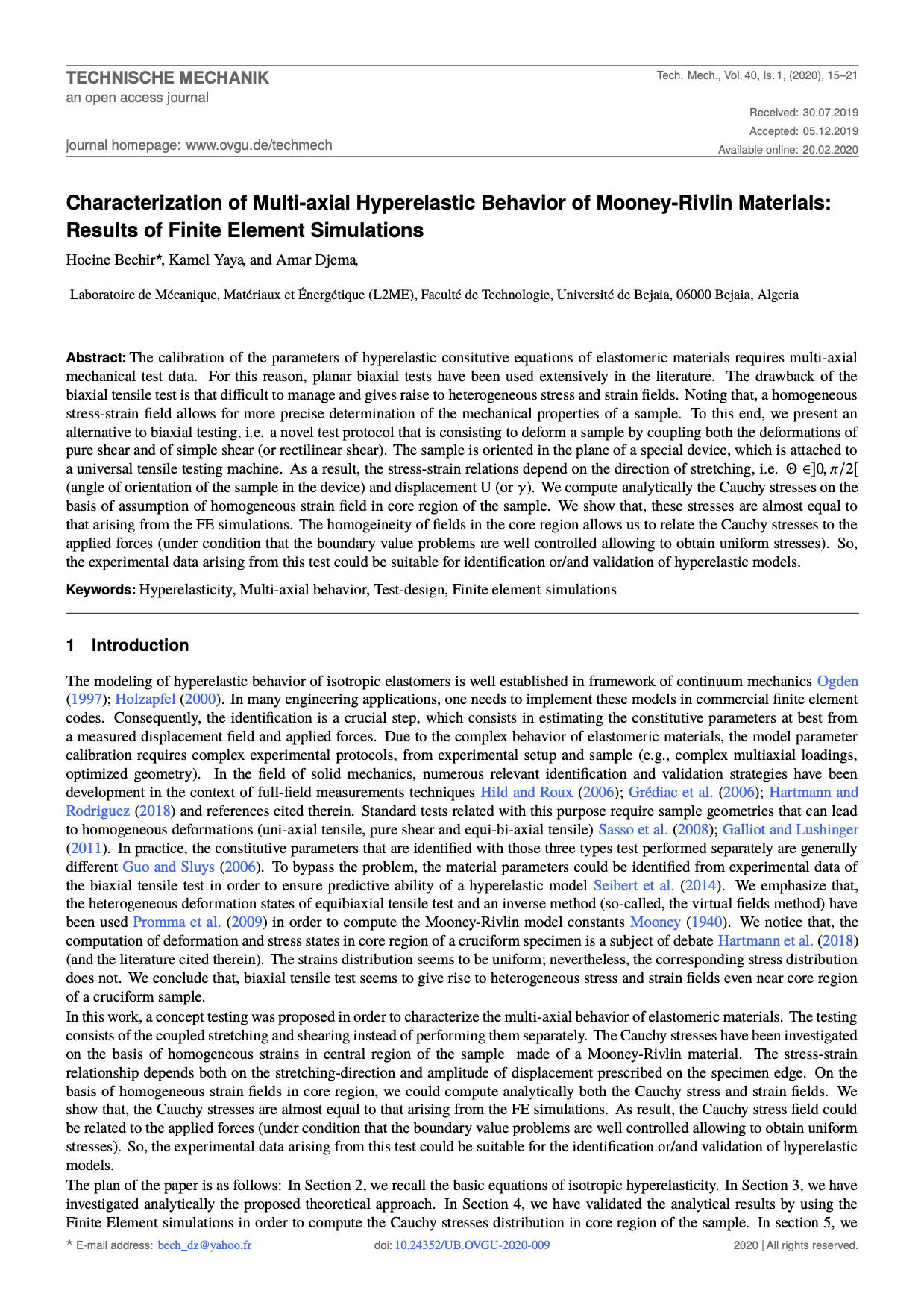Characterization of Multi-axial Hyperelastic Behavior of Mooney-Rivlin Materials: Results of Finite Element Simulations
DOI:
https://doi.org/10.24352/UB.OVGU-2020-009Keywords:
Hyperelasticity, Multi-axial behavior, Test-design, Finite element simulationsAbstract
The calibration of the parameters of hyperelastic consitutive equations of elastomeric materials requires multi-axial mechanical test data. For this reason, planar biaxial tests have been used extensively in the literature. The drawback of the biaxial tensile test is that difficult to manage and gives raise to heterogeneous stress and strain fields. Noting that, a homogeneous stress-strain field allows for more precise determination of the mechanical properties of a sample. To this end, we present an alternative to biaxial testing, i.e. a novel test protocol that is consisting to deform a sample by coupling both the deformations of pure shear and of simple shear (or rectilinear shear). The sample is oriented in the plane of a special device, which is attached to a universal tensile testing machine. As a result, the stress-strain relations depend on the direction of stretching, i.e. Θ 2]0, π/2[ (angle of orientation of the sample in the device) and displacement U (or γ). We compute analytically the Cauchy stresses on the basis of assumption of homogeneous strain field in core region of the sample. We show that, these stresses are almost equal to that arising from the FE simulations. The homogeineity of fields in the core region allows us to relate the Cauchy stresses to the applied forces (under condition that the boundary value problems are well controlled allowing to obtain uniform stresses). So, the experimental data arising from this test could be suitable for identification or/and validation of hyperelastic models.





